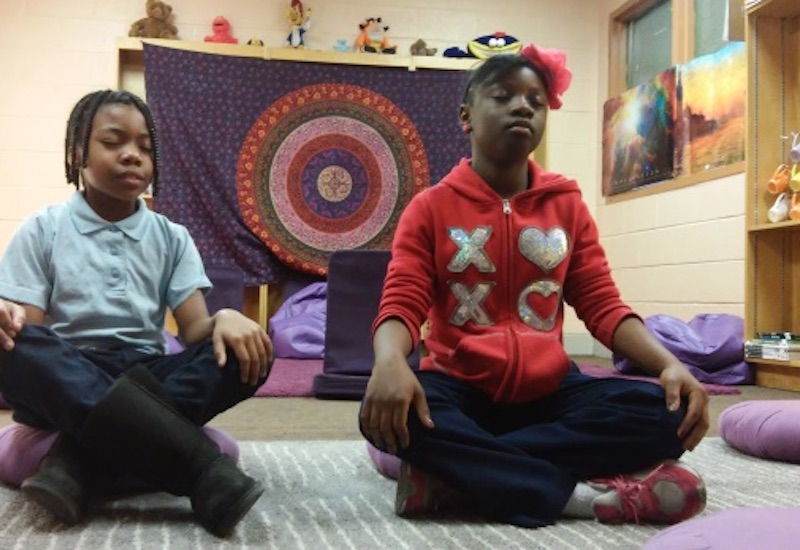Genius School Replaces Detention With Meditation
November 2, 2017
Two students have just gotten into a violent confrontation. Rather than detention or the principal’s office, their teacher has sent them to a room of pillows and lavender: Robert W. Coleman Elementary school’s meditation room.
Students who are disruptive in class are sent to the “Mindful Moment Room” by their teachers. There, staff members encourage them to talk about what led to their dismissal from class, and then sit down for some breathing exercises. They are instructed to close their eyes and inhale and exhale deeply.
Although a meditation room is no miracle cure for students’ behavior, those at the school say it has helped significantly with their learning and productivity. “When the kids come down here, they’re all rowdy and goofing around,” said one third grader at the school who has been using the Mindful Moment room since it was established in the school three years ago. “When they leave the room, they are peaceful and quiet and ready to do their work.
Before the Mindful Moment Room, students who got in trouble were sent to detention or the principal’s office. But since making the meditation room available, children are rarely seen by the principal for disciplinary issues anymore.
A study published in JAMA Internal Medicine suggests that mindfulness meditation can help with lessening the effects of anxiety, depression and pain. These kids who are dealing with high-stress situations a lot of the time are coming into school on high alert. Their body’s alarm system is switched on, so they may be primed for fight or flight and not able to sit calmly and pay attention. “This would make a great addition to any school, especially high school where there is so much more stress than elementary school”, stated Rianna Patel (11) when asked about her thoughts on the Mindful Moment Room.
Giving these kids the chance to breathe deeply, to focus their attention on themselves rather than what’s going on externally, can be a very effective way to ease the stress, improve attention, and make them calm.
When we sit with pain or discomfort rather than act on it, we learn that feelings and sensations come and go. We don’t necessarily need to act on them all. We have a chance to pause and make a thoughtful choice about how to respond.





































